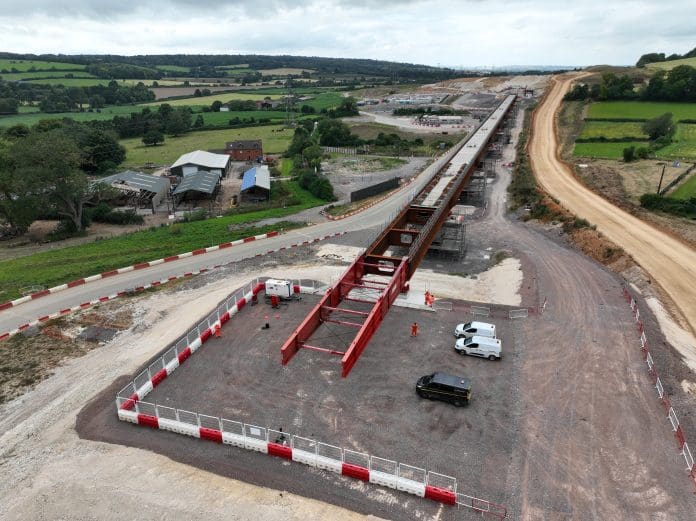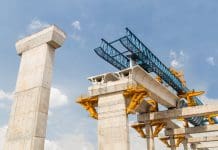A new timelapse video shows the process of establishing the Wendover Dean viaduct, showing the deckslide process in its preparation for HS2
The Wendover Dean HS2 viaduct weighs 3,700 tonnes, and took just over eight months to complete.
The process consists of assembling the viaduct from its three parts, and sliding it into position over the gap, ultimately putting 450m of work into place.
The HS2 viaduct got heavier as it went along
Due to the method of construction, as the HS2 viaduct was pushed further out, it got heavier, making it harder to push further out.
During this process, pads made from teflon were used between the deck and temporary steel bearings to minimise the friction, allowing the viaduct to be slid as easily as possible.
In January as the project started, the HS2 viaduct weighed 590 tonnes, and over the eight months as sections were added, the weight increased to 3,700 tonnes.
This is just the beginning
The Wendover Dean viaduct is just one of around 50 as part of the HS2 plan.
It is also the first railway bridge in the UK to use a ‘double-composite’ structure, reducing the carbon output by reducing the amount of steel and concrete.
The double composite structure is hollow, with two steel beams between two layers of concrete, creating a stronger and more cost and carbon efficient design.
EKFB senior project engineer, James Collings, said: “The final launch for Wendover Dean viaduct marks two years of teamwork from EKFB and our supply chain partners Eiffage Metal. I am very proud of our progress and would like to thank the team for their ongoing commitment to the safe delivery of the viaduct. Over the next three months, we will see the viaduct lowered onto its permanent bearings in preparation for its concrete deck.”
The HS2 project will see over 500 new bridges, including the longest bridge in the UK at Colne Valley.



![[VIDEO] HS2 completes 4,600-tonne viaduct slide across M6 The HS2 team completed a 17-hour long operation sliding the viaduct structure across the M6 without closing the motorway](https://www.pbctoday.co.uk/news/wp-content/uploads/2025/12/M6-South-viaduct-slide-taking-place-across-a-live-motorway-December-2025-218x150.jpg)





![[Video] Enhancing safety with fire doors: A case study of Marina Care Home](https://www.pbctoday.co.uk/news/wp-content/uploads/2025/06/maxresdefault-218x150.jpg)

![[VIDEO] Heathrow’s third runway plan wins out over Arora London, United Kingdom – May 31, 2023: A commercial airliner taking off at London's Heathrow Airport, representing plans for a third runway](https://www.pbctoday.co.uk/news/wp-content/uploads/2025/11/iStock-2143084103-218x150.jpg)


